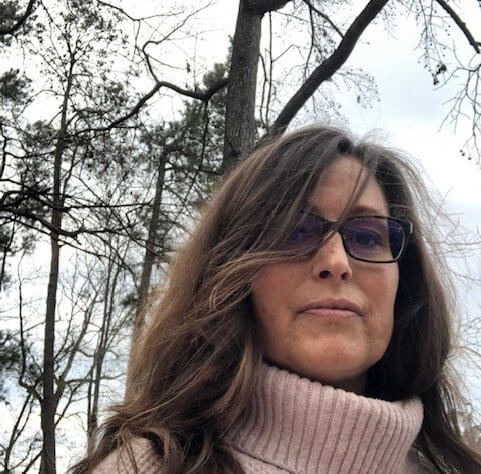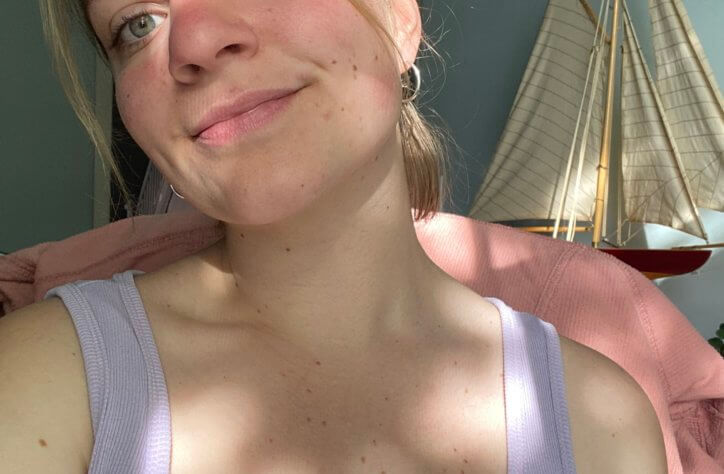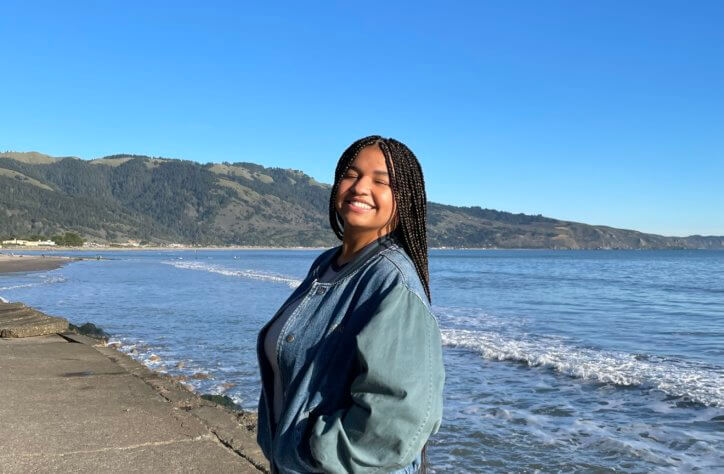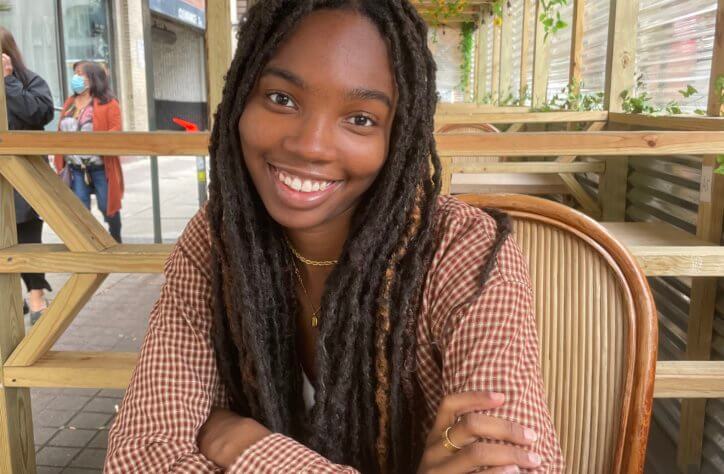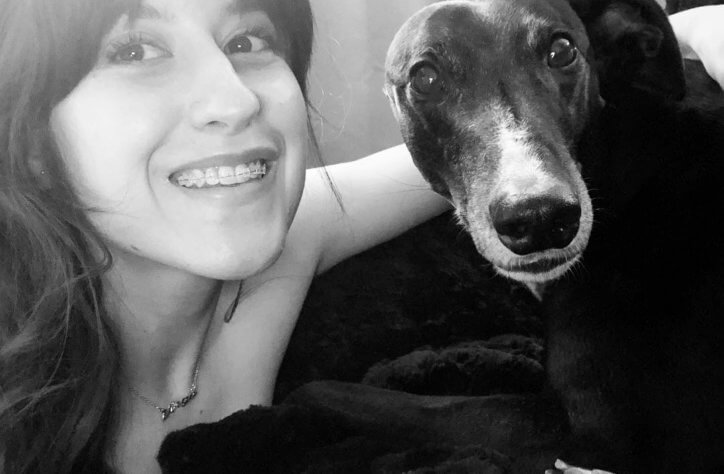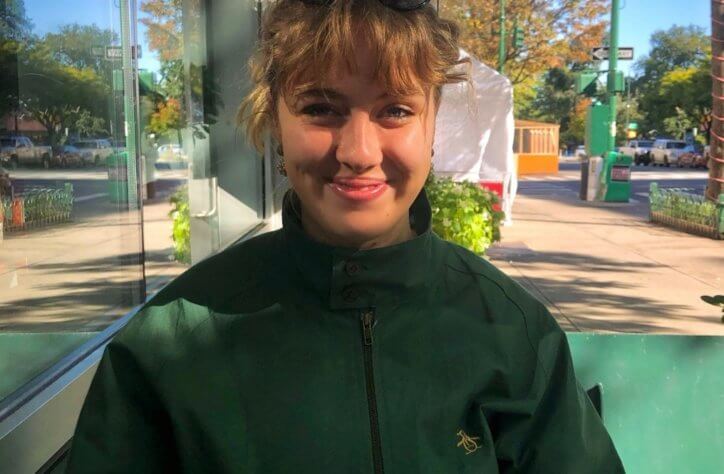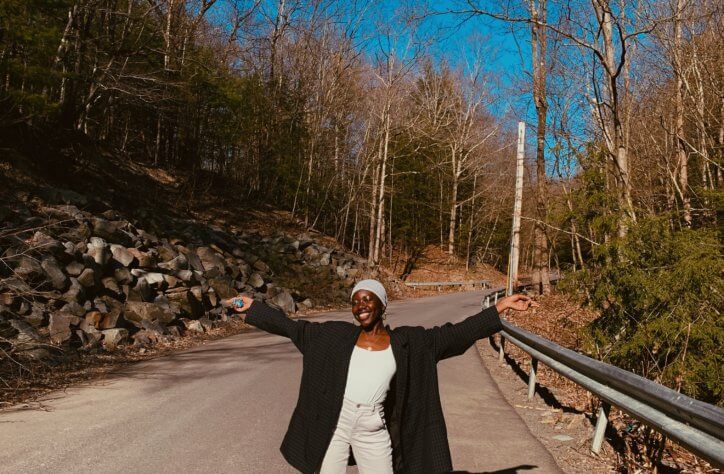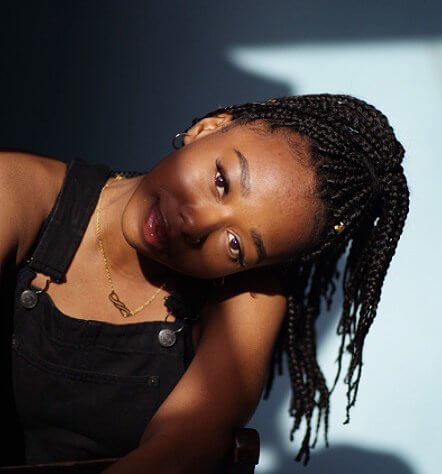We’re all submerged, all of us
“We’re all submerged, all of us” writes Zadie Smith, which somehow resonates even more insidiously as I read those words from my laptop resting on my knees, in between intermittent and inane scrollings through Instagram on my phone. Zadie Smith reflects on social media in her short story “The Lazy River”, which was published in The New Yorker in 2017. It seems exceptionally fitting that I should rediscover this story January 1st, 2019 just as I’m warned by Instagram I have used my one hour maximum for that day whilst inundated with all the “new year, new me” proclamations on my feed; it’s as if the universe is telling me – enough is enough.
Recently I’ve been trying to work out when my brain became so incapable of focusing on one task for more than thirty seconds. It’s like growing taller as a child; it happens so gradually you don’t notice until your estranged relatives tell you with gusto just how many inches you’ve grown since you last saw them. I didn’t notice just how much my brain had changed until the change was so substantial the older parts of me, the Aunts and Uncles of my psych if you will, were there to remind me just how different I now looked. I grew up as a reader; with my head buried in one book for days, barely deviating from the task at hand (which was usually finishing the new Harry Potter book before my sister). But now it feels like I’m playing Russian roulette in my mind; it’s like I have a constant vapid spinning, a perpetual tick ticking of the barrel of a gun that will never rest long enough to fire. My mind is constantly whirring from one thing to the next; a photograph here, a video there, a tweet, a post, one more thing on the everlasting lazy river that we’re all caught up in. Constantly engaging yet disengaged at the same time; I find myself endlessly scrolling, and for what? I consume innocuously, accidentally but insatiably. Zadie Smith perfectly sums up the passivity of this in her one simple metaphor; the lazy river of her story becomes our lazy reluctance to resist a current that is taking us around and around the same loop, forever. It’s an addiction, and it’s endemic.
I have been thinking about a social media purge for a while. I think as you become older you start to be able to sniff out the toxicities in your life that you perhaps would not have had the vantage to pick out earlier; whether that be a toxic person, a toxic habit, toxic thoughts, and perhaps being able to recognise the poison in your life long enough to try to suck it out of your body is what makes you a grown up. Perhaps, let me get back to you in a few years. I can see what the toxic relationships in my life look like now, I can preemptively taste their acridity on my tongue, and despite not being the perfect grown up just yet I know which relationships are important and which ones are not.
So now that I see my relationship with social media discolour around the edges and begin to fester I know that it too will be becoming a poison of its own- so it’s time to siphon out the infection, or better still, chop the whole thing off, to relent its gangrenous influence on the rest of my life. Perhaps I’ve gotten lost in this metaphor, how very Zadie Smith of me, but I think I’m done with it now.
My addiction to social media crept up on me; myself initially viewing it as a delight, I let it in. I let it dictate social interactions, social connections, I let it seep inextricably into the way I live my life. Whereas for other toxic things; alcohol, drugs, certain patterns of behaviour, I have mostly tried to keep them at a tentative arms length and I have stayed hyperaware that one day I may have to manage my relationships with them a bit better. But social media disguised itself as a cute cuddly teddy, one I have held tightly to my chest for the last ten years. I didn’t realise that one day that teddy would grow teeth.
I get anxiety now, niggling in the bottom of my stomach, when I upload posts onto Instagram; how many likes will I get? Will the photo go with my aesthetic? Will that person I want to see it, see it? The fear is real and I hate it, so much so that I haven’t uploaded a new post in over a month. Instagram fosters this intense casual narcissism in all of us; I find myself stalking my own page more than I should, watching my own stories, flicking back through my own rose tinted history, like somehow I’ve forgotten it’s all augmented. “Doing it for the gram” is a phrase that now sits so uncomfortably under my skin that I can feel its sharp edges constantly; when I move, when I eat, when I sleep. Whatever I’m doing, however small, I feel like a version of it has to be put online, as if those digital memories are what is going to actualise it. Points in my life are becoming validated more by how many likes I get than how my actual experience was. This is all harboured in the sinister perception that our value can now be quantified by our social media presence, hence why I find joy trawling through my own feed; it’s like one grossly narcissistic pat on the back. I’m less impressed by the experiences I’ve had than how others have viewed those experiences, and that’s not okay. So isn’t it time to say bu-bye?
Instagram now has the option to limit your usage through setting daily goals which you will be notified about once you exceed them; it’s just like when Netflix asks if you’d like to continue watching a show after four episodes or so, passive aggressively reminding you it’s been four hours of binging and perhaps you should move. Just like Netflix, these reminders on my Instagram merely illicit a cold hard shame and a private mourning for all the hours that I have lost than they stop me using it. Social media is now included as part of Internet Addiction Disorder; alongside an addiction to gaming and online shopping, although many psychologist are suggesting it be recognised as its own phenomena entirely. Like other dependency disorders, Internet Addiction Disorder directly affects the pleasure centre of the brain, making the dings, likes and notifications you get on your iPhone actually trigger a release of dopamine to promote a pleasurable experience. Over time you need more and more of this activity, more hours spent on your phone, more notifications and likes, to induce the same pleasurable response; the addiction isn’t just social and habitual, it’s chemical. Internet Addiction Disorder, also commonly known as Compulsive Internet Use, is becoming extremely common, with some reports suggesting it affects up to thirty eight percent of the general population. So if you’re finding yourself staring into the Instagram time void daily like myself, know that (maybe depressingly) you are definitely not alone, but perhaps we should start treating this consumption with a little more severity.
Because being able to see how many hours I’m spending on Instagram doesn’t really tell me anything I don’t already know. I’ve known the constant and monotonous scrollings on my phone aren’t healthy for some time. Perhaps I realised it first when I got a repetitive strain injury in my left thumb. Scrolling, as insipid an activity, should never be repetitive enough to harm me physically. That was strike one. Next, I noticed the exhaustive spreading of my attention over things that don’t matter, spreading me thin like butter. That was strike two. Yet, it’s the listlessness of it all that becomes the third and final strike, the strike that tells me it’s time to begin the long arduous task of attempting to re wire my brain. Zadie Smith sums up the inevitability and indifference in all of our relationships with social media perfectly in her short story; her characters are trapped in that endless lazy river, the sides thick with scum, the waters green, but they go round and round it just because it’s there. It’s just like social media; we scroll and we scroll and we scroll but does anyone enjoy it anymore? Or are we all just allowing ourselves to be carried around the same piss infested water because it’s just… there?
I’m not going to patronise you, my reader, and assume your ignorance by linking you to the plethora of sources out there that connect social media with poor mental health, we all are aware, because we are all akin to it, we all experience it daily. Smith writes as “us” and “we” in her story and that’s exactly how I feel talking today. It’s always “us” and “we” when the problem is so universal, so inextricable from the way we’re all living our lives. It’s always “us” and “we” when social media has become the qualifying experience of our generation. It’s “us” and “we” because we’re all caught in the same current and our experiences somehow are the same. Sometimes I wish I was 90 years old, and the insidiousness of social media could soar blissfully over my head; myself regarding it as just another one of those things I wasn’t acclimatised to; just another thing that young people did, like texting or understanding how to use Wifi. Just imagine.
I know that I’m addicted to my phone. I know that because I get separation anxiety on a long haul flight or at the theatre. The addiction is deep and harmful and cunning so for some time I have been working my way up to finally starting to deal with it. As a journalist, I can’t fully disconnect, and actually, I wouldn’t want to, but what I can do is re-establish my relationship with social media (specifically Instagram) and redefine its purpose. I’m not ever going to say that social media is terrible, in fact the way that people now so readily consume news and participate in debate is a direct effect of social media. Social media has galvanised a generation; it has created boundless platforms for representation and is a way for people like myself to share their work and be constantly (sometimes too constantly) informed. So of course, as I write this knowing full well it will do the rounds on Twitter and Facebook and I’ll probably post a link on my Instagram, I will never ever say social media doesn’t have its benefits, because its positives are limitless.
But my job was to find a way to reap the positives of the interconnectivity of social media whilst pulling back from the negatives. I want to read news, not stories about z list celebrities. I want to see pictures that inspire me, not pictures that make me feel like shit. I want to feel connected to a community that I am a part of, not disassociated from an elite world that will never be my own. I want to feel positive and ambitious, not lost and existential (although that last one might just be a fait accompli when you’re 25 and a writer, but for now let’s blame it on Instagram shall we?). I know what I wanted from social media, and I know the glaringly positive influence it’s had on my life and career. Changing my relationship with it is like constructing the perfect house in my mind, the foundations were there, and now it was time to build on them, or perhaps a better metaphor was that social media and myself were about to endure an onerous few hours of intense couple’s therapy.
My kryptonite is Instagram, same for the girls in Zadie Smiths story, and same for the majority of you reading this. Somehow it is always Instagram over Facebook or Twitter that people have the unhealthiest relationship with. Instagram has made me zestless; it’s made me so brainless I can sit and watch a video of someone making a cake I will not and cannot eat on a loop a few times before I realise I’ve been watching the same video over and over (there’s that lazy river again). I couldn’t spend an hour blindly scrolling Facebook, but I can easily do that on Instagram, and for what? Videos of food I’ll never eat and photos of people I’ll never meet? It’s this inert estranged stalking that people are so addicted to on Instagram. Instagram provides tiny iPhone shaped windows into other people’s lives, and I think we need to ask ourselves why we’re so addicted to being silent voyeurs in each other’s experiences.
We have all mutually reduced each other to likes, views and comments; little icons of ourselves that tell our friends that we’re there, that we exist, and that for every nice restaurant they go to on their birthday, we’ll be right there with them. It’s creepy, but for some reason (oh that lazy river) we’re all now conditioned to think nothing of it, to think our intense meticulous knowledge of each other’s day to day lives is actually normal, no not even normal, its mundane. I will admit, that I do still enjoy this detail in my friends’ lives. I love seeing what they’re doing, especially having recently relocated, most of my friends live on the other side of the world, and watching their vacuous stories on Instagram actually makes me feel close to them (is that sad?). However, there is no reason why this knowledge of a stranger’s life is necessary or, in any way, healthy.
I now have the automatic reflex to click to the icon on the bottom left corner of my screen as soon as I unlock my phone, before I have even recognised the intention. Instagram has become the first thing I look at in the morning before I’ve even looked at myself in the mirror. I have tried to monitor my consumption. No hour binges of Instagram whilst I pretend to watch a show. I’ve even set a reminder on my Instagram to tell me when my allowed hour a day is up, and I’m actually abiding by it. Instead, I’m trying to be present. I have started putting my phone away whilst I’m working. I have a no screen rule from 10pm. This childish schooling of my timetable is keeping me sane. But the monitoring of consumption isn’t quite enough when it’s what I’m consuming that is what is problematic. Even with the Instagram cap at just an hour a day the insta-fear sits so deep inside me I can feel it nearly constantly.
I’m trying to cure my brain from its addiction to the banal, the aimless, the insignificant, so I had to look for all those things in my feed and begin the purge. I have since unfollowed the majority of my feed; assisted with questions like: how much do I love courgetti? How much do I actually enjoy watching strangers boomerang spin in an endless array of sweater dresses? How much do I need to know about random skinny Australian women’s workouts? The answer to all of it was: I do not, and I should not, which helped me whittle down my follow list by the hundreds. So I purged. I purged and I purged; all the strangers that I follow who neither inform me nor inspire me, and especially focused on unfollowing the people I follow just because I enjoy to hate them. It felt like ripping a Band-Aid off or peeling off dried glue from my skin, or taking off a tight bra at the end of the day; it felt amazing. Now I’m left with news, poets and writers I love, actors I enjoy, activists, musicians I like, LGBTQ+ accounts, my lovely friends and the cast of Queer Eye (because I need them okay?).
We are all submerged, it is true, but no matter how much we are addicted to social media, we still all yearn for real life. I have had many conversations with people who express similar concerns, similar desires for actual tangible experiences that we can hold on to, I’ve had too many conversations to believe that we have all simply stopped enjoying real life. The problem is deep yes, but there is a bottom to it and if you try I’m sure your feet can find the floor long enough to stand up and lean against the current. There is a voracious and insatiable hunger in all of us for the real world and no matter how much scrolling I do this is never going to be satisfied unless I look up from my screen. Instagram pictures, Facebook posts and tweets just turn to mulch in our mouths. We’ve been chewing on nothing for nearly ten years and its only now that we have realised just how starving we all are. My cleanse may not have been enough to escape the endless cycle of that lazy river, but it’s been enough to ensure my head stays above the surface and, once in a while, looks up to take in the bright world around me.
